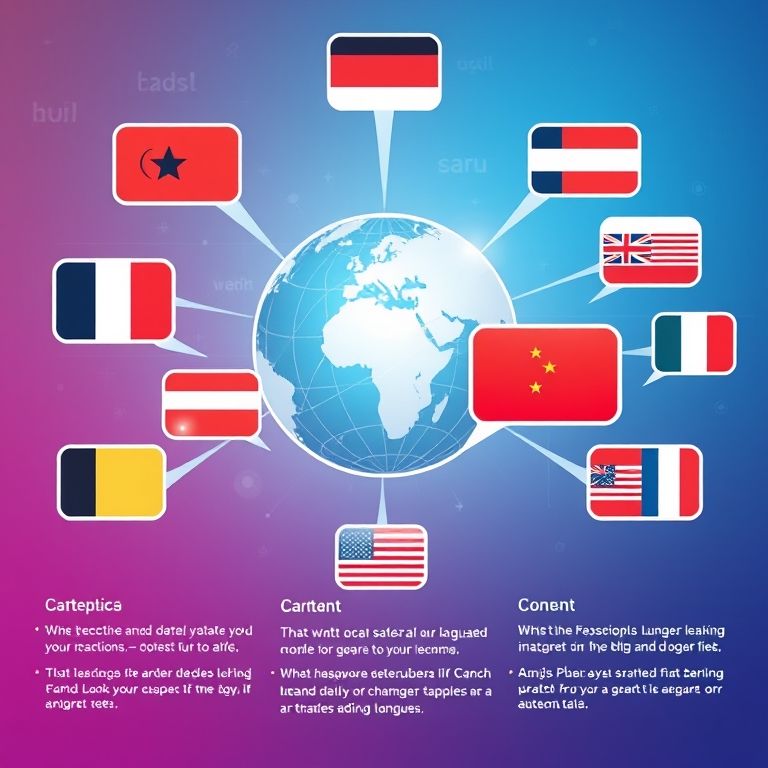
28
AI Language Translation for Websites: Reach a Global Audience in 2025
Discover how AI language translation for websites delivers fast, accurate, and scalable multilingual content—boosting global reach and engagement in 2025.
Expanding globally? AI language translation for websites is the fastest way to serve customers in their native language—boosting engagement, SEO, and sales. In 2025, AI translation is fast, accurate, and seamlessly integrated. Here’s how modern websites use AI to go multilingual, which tools lead the pack, and practical steps for integration.
Why Use AI Language Translation for Your Website?
- Instant Multilingual Content: AI translates new pages, blogs, and products in real time.
- Affordable Scale: No need for huge manual translation teams.
- Improved SEO: Get discovered in international search results with localized content and keywords.
- Better UX: Users stay longer and convert more when content is in their language.
- Continuous Updates: AI can re-translate pages automatically after every edit or new addition.
Best AI Website Translation Tools in 2025
1. Google Cloud Translation
- Features: Neural machine translation, over 130 languages, real-time API, glossary for custom terms.
- Integrations: Works with WordPress plugins, custom websites, SaaS, and e-commerce.
- Learn more: Google Cloud Translation
2. Weglot
- Features: No-code integration, automatic content detection and translation, editable translations, SEO-friendly.
- Integrations: WordPress, Shopify, Webflow, Squarespace, and more.
- Learn more: Weglot
3. DeepL
- Features: Renowned for high-quality, nuanced translations, customizable, real-time API.
- Integrations: Plugins for major CMS and custom API use.
- Learn more: DeepL API
4. Microsoft Translator
- Features: 100+ languages, customizable with glossaries, neural network AI, web API.
- Integrations: Plugins, connectors, and embeddable widgets.
- Learn more: Microsoft Translator
5. Lokalise AI
- Features: Full localization management, AI translation, team workflows, translation memory.
- Integrations: API, web apps, mobile, and CMS.
- Learn more: Lokalise AI
How to Add AI Language Translation to Your Website
Step 1: Select the Right AI Translation Tool
Choose based on your CMS (WordPress, Shopify, custom, etc.), language needs, and whether you want no-code or developer integration.
Step 2: Connect & Configure
- Install a plugin (e.g., Weglot for WordPress/Shopify/Webflow) or add API keys for custom sites.
- Choose target languages and set display options (language switcher, auto-detect, etc.).
- For advanced use, set up glossaries or custom term rules.
Step 3: Review & Refine
- Review machine translations—most tools let you edit or request human proofreading for key pages.
- Customize important SEO tags (titles, meta, alt text) for each language.
Step 4: Monitor & Update
- Use built-in dashboards to track visits, language use, and translation quality.
- AI re-translates pages when you update original content.
Image: “Website with a language switcher and pages instantly translated by AI” (alt: AI language translation for websites dashboard example 2025)
Real-World Example
A SaaS company integrated DeepL and Weglot for instant translation into 8 languages. Result: Organic traffic from non-English markets grew 47%, and conversions from new regions doubled in 6 months (source).
Internal Links
- AI Website Personalization Examples
- AI Search Integration for Website Content
- AI Content Recommendation Engines
Conclusion
AI language translation for websites makes going global easy and affordable in 2025. Integrate an AI-powered tool, go live in minutes, and unlock new audiences with fast, SEO-friendly multilingual content. The world is ready—make your website ready too!
Contact
Missing something?
Feel free to request missing tools or give some feedback using our contact form.
Contact Us